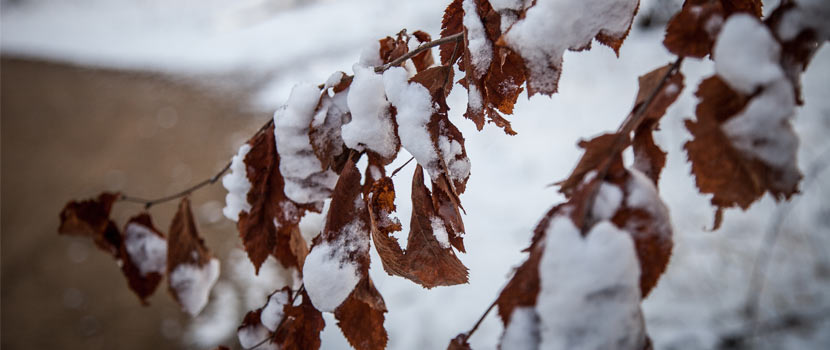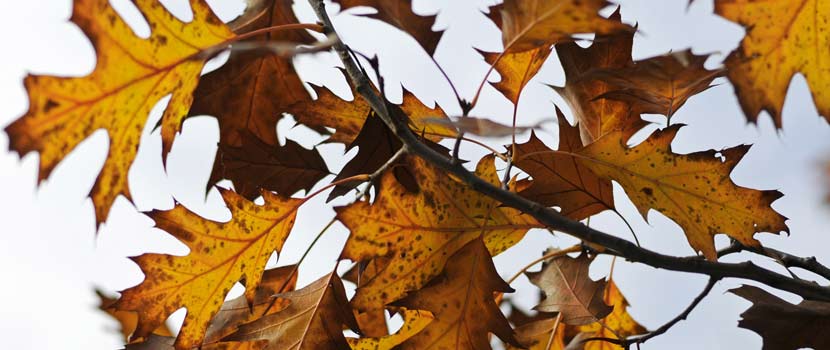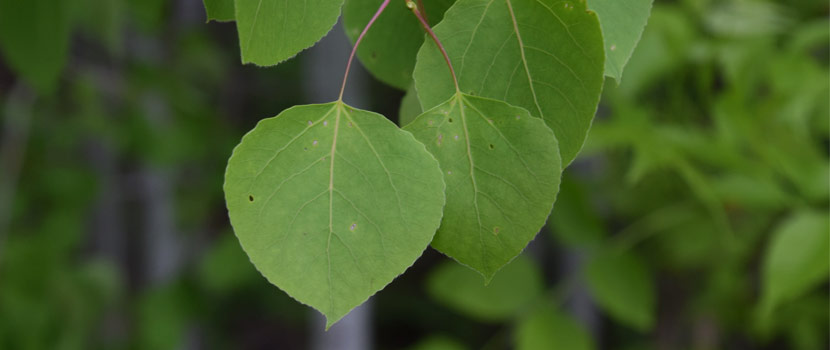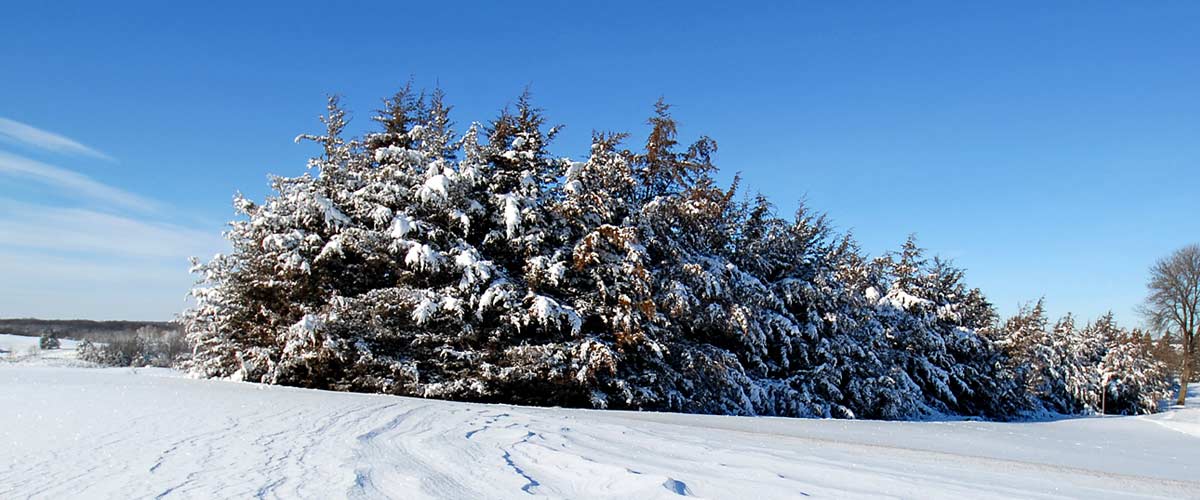
Everyone knows that in our area, most broadleaf trees lose their leaves for the winter season (it’s called “fall” for a reason). However, what most people probably don’t realize is that evergreen trees drop their needles, too. While it doesn’t happen every year, it does happen, and it is nothing to be concerned about.
So, Which Evergreens (AKA Conifers) Lose Their Leaves?
There are seven families of coniferous trees and shrubs found around the world. I’m sure we all recall the taxonomic structure from high school biology: domain, kingdom, phylum, class, order, family, genus, species.
The largest conifer families are (in order):
- Pine (includes spruce, fir, pine, and larch)
- Podocarps (conifers indigenous to the southern hemisphere)
- Cypress (includes junipers, sequoia, redwood, and yew).
In total there are about 588 species of plants that fall under the “conifer” umbrella. What they all have in common is that they use cones for seed production. They also all lose their needles, albeit some more frequently than others.
The main reason for leaf drop on most broadleaf deciduous trees is to conserve resources during the cold, dry winter months. It is similar for conifers, though it is also to make room for new growth.
What To Expect When Inspecting (Conifers in the Fall)
As with deciduous trees, fall is the time of year for needle drop. Not all conifers lose their needles every year, but there are a couple of general rules of thumb for how frequently this will occur with each species.
Also, needle drop is more noticeable on some trees than others. For example, on white pine, the yellowing inner needles are very easy to see. This is because the ratio of green to yellowing needles is nearly 1:1.
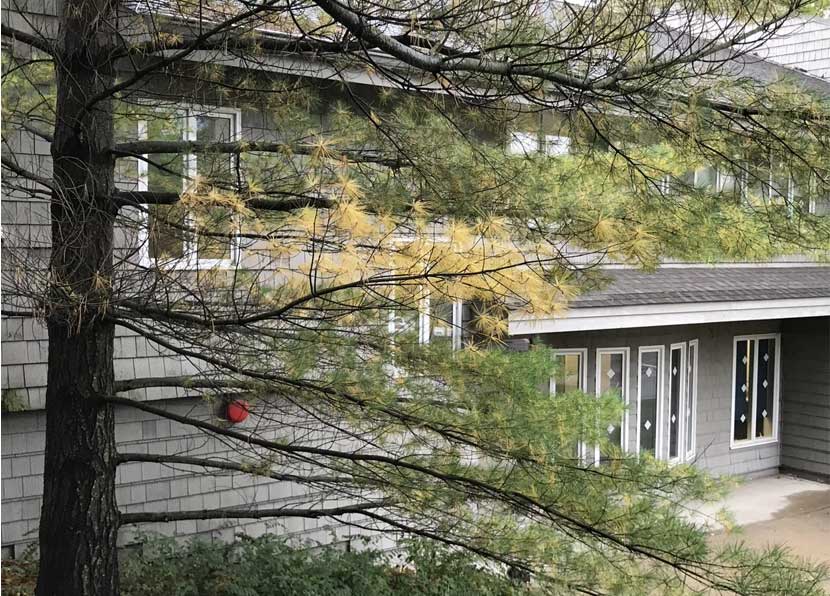
On other trees, such as most spruce or fir trees, this process is barely noticeable at all. On these trees, fewer needles brown at the same time, and they brown over a longer period of time.
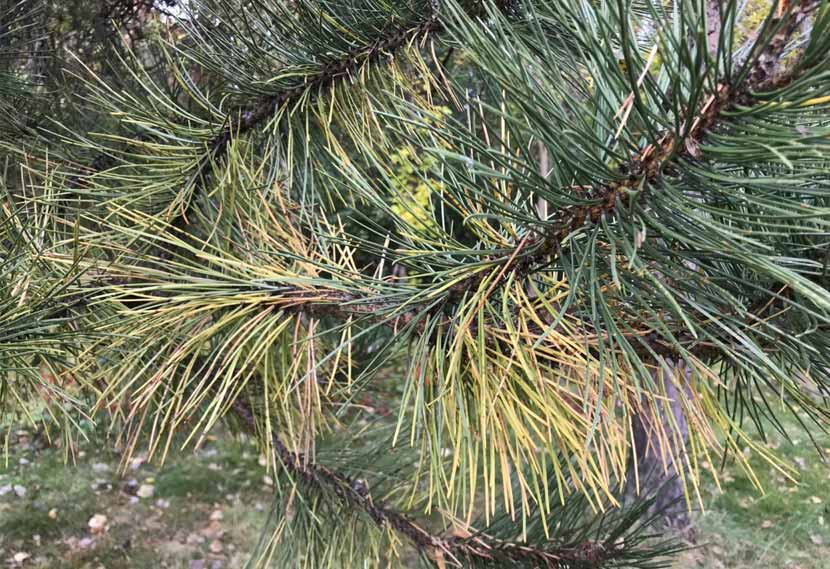
Here is a general breakdown of how frequently some of our most common conifers lose their needles:
- White pine: 2-3 years
- Red pine: 4 years
- Ponderosa Pine: 3 years
- Jack pine: 2-4 years
- Scotch pine: 2-4 years
- Austrian pine: 4 years
- Mugo pine: 5 years
Except after C…
And then, of course, there are the exceptions to the rule. Eastern larch (also known as tamarack), dawn redwood and bald cypress trees lose all of their needles every year. Similar to deciduous trees, this helps protect them against winter conditions and (like all conifers) allows them to grow under fairly challenging soil and climate conditions.
When Is Needle Drop A Problem?
As mentioned earlier, fall needle drop is normal and healthy. If needle drop occurs in the middle of the growing season, however, there may be other issues with the tree.
Stress, such as drought or flooding, can be a contributing factor when a tree drops its needles during growing season. Conifers that are under stress will typically show it by dropping their outer needles first. Normal fall needle drop will occur at the inner-most needles.
Archive photo: "pine tree needles by szczygly" by Szczygly is licensed under CC BY-NC-ND 2.0.
About the Author

Paul is the Manager of Forestry and Horticulture at Three Rivers Park District – a position he has held for the past 10 years. Prior to that he was stomping around the wilds of Milwaukee County as the natural areas manager, and before that he was stomping around the wilds of New York City (yes, there are some) as an environmental restoration project manager for the New York City Department of Parks and Recreation. In his spare time he enjoys installing flashing on old windows.
Related Blog Posts
Why Do Some Trees Keep Their Leaves Through Winter?
By: Paul Kortebein
Now that fall is long past, why are some trees still hanging onto their leaves? Learn what's happening in these trees and why it may be beneficial to them.
Species Spotlight: Northern Red Oak Trees
By: Paul Kortebein
Northern red oak trees are one of the most common trees in our area. Learn more than you ever knew you wanted to know about northern red oaks in this not-quite-comprehensive-but-pretty-close post.
Species Spotlight: Quaking Aspens
By: Paul Kortebein
You may know how quaking aspens got their name, but did you know that a quaking aspen is the largest living organism on earth? Read on to learn all about these common trees, including how to identify them and how a changing climate may impact them.
